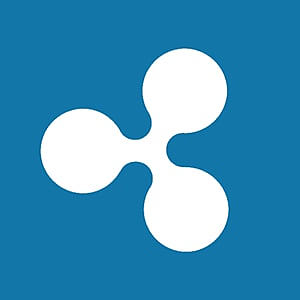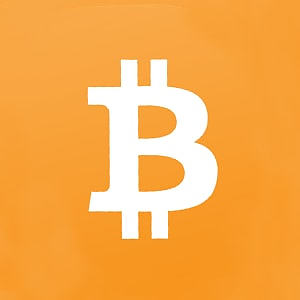The US Dollar started a recovery on the back of risk aversion that could continue at the beginning of the last week of June and of the second quarter. Inflation data from the US, the Eurozone, Australia, and Canada will be watched closely. Also, markets will hear from central bank officials who will speak at the ECB Forum.
Here is what you need to know for next week:
In the US, the key report next week will be the Core Personal Consumption Expenditures (PCE) on Friday. The Core PCE is expected to show a 0.4% increase in May, and the annual rate is expected to remain at 4.7%. Additionally, personal spending and income data will be released. The GDP data on Thursday is an update and could be ignored by market participants. Jobless Claims will offer new clues about the labor market.
It will be a busy week for Canada that will shape Bank of Canada's expectations. On Tuesday, the Consumer Price Index for May will be released, and a decline in the annual rate from 4.4% to 3.4% is expected. On Friday, April GDP and the BoC Business Outlook Surveys are due.
Analysts at NBF:
In Canada, a slight decline in gasoline prices, coupled with further moderation in the food segment, could have translated into a 0.3% increase of the consumer price index in May (before seasonal adjustment). If we’re right, the 12-month rate of inflation should come down from 4.4% to a two-year low of 3.2%. The core measures preferred by the Bank of Canada should decrease as well.
In the Euro area, inflation data will take center stage. Germany will report on Thursday, and the Eurozone (EZ) on Friday. The EZ Core Harmonized CPI annual rate is expected to decline from 6.1% to 5.5%.
The European Central Bank (ECB) will hold its annual Forum on Central Banking, which will start on Monday. The closing panel on Wednesday will feature European Central Bank’s Lagarde, Bank of England's Bailey, Federal Reserve's Powell, and Bank of Japan's Ueda. Many other central bank officials will also be speaking
In China, the NBS PMIs will be released on Friday and could show further slowdown. In line with a global trend, the manufacturing sector is expected to remain in contraction territory, and the service sector to slow but holding above 50.
In Australia, the Consumer Price Index for May, due on Wednesday, will be critical for the Reserve Bank of Australia (RBA). The annual headline is expected to show a large drop from 6.8% to around 6.0%. On Thursday, Retail Sales data is due.
Analysts at TD Securities:
A notable decline in petrol prices will contribute to the lower May CPI print while we could also see recreational prices pull back after the Easter holidays. Given a red-hot labour market and the RBA's increasingly hawkish message on inflation, we think another 25bps makes sense at its July meeting, as the monthly inflation print remains far above the RBA's inflation target.
The US Dollar Index finished the week higher after rising during Thursday and Friday on the back of risk aversion and also supported by Fed Powell's comments about more rate hikes. The DXY rebounded from monthly lows toward 103.00.
The Japanese Yen resumed the downside as no change in stance was seen from the Bank of Japan, extending the monetary divergence from other central banks. USD/JPY jumped on Friday to monthly highs approaching 144.00. EUR/JPY was above 156.00 and GBP/JPY surpassed 182.00, reaching their highest levels since 2008 and 2015, respectively.
GBP/USD failed to benefit from the hawkish rate hike from the BoE amid concerns about the UK economic outlook. The pair pulled back from monthly highs, finding support around 1.2700.
EUR/USD was rejected from above 1.1000 and dropped below 1.0900. The last push to the downside took place on Friday after weaker-than-expected Eurozone PMIs.
Commodities tumbled during the week, and weighed on Antipodean currencies. Silver lost more than 7% and Gold 2%. The Australian Dollar was among the worst performers during the week.
AUD/USD suffered the worst weekly decline so far this year, falling almost 3%, ending below 0.6700, and back under the 20-week Simple Moving Average. NZD/USD ended a three-week positive run with a 1.5% slide, closing around 0.6150. The Canadian dollar outperformed, with USD/CAD ending the week marginally lower near 1.3200, the lowest weekly close since September 2022.
The worst performer was the Turkish Lira, unable to benefit from the Central Bank of the Republic of Turkey's pivot by rising interest rates sharply. USD/TRY jumped to fresh record highs above 25.00, ending the week with a 6.5% gain.
Like this article? Help us with some feedback by answering this survey:
Information on these pages contains forward-looking statements that involve risks and uncertainties. Markets and instruments profiled on this page are for informational purposes only and should not in any way come across as a recommendation to buy or sell in these assets. You should do your own thorough research before making any investment decisions. FXStreet does not in any way guarantee that this information is free from mistakes, errors, or material misstatements. It also does not guarantee that this information is of a timely nature. Investing in Open Markets involves a great deal of risk, including the loss of all or a portion of your investment, as well as emotional distress. All risks, losses and costs associated with investing, including total loss of principal, are your responsibility. The views and opinions expressed in this article are those of the authors and do not necessarily reflect the official policy or position of FXStreet nor its advertisers. The author will not be held responsible for information that is found at the end of links posted on this page.
If not otherwise explicitly mentioned in the body of the article, at the time of writing, the author has no position in any stock mentioned in this article and no business relationship with any company mentioned. The author has not received compensation for writing this article, other than from FXStreet.
FXStreet and the author do not provide personalized recommendations. The author makes no representations as to the accuracy, completeness, or suitability of this information. FXStreet and the author will not be liable for any errors, omissions or any losses, injuries or damages arising from this information and its display or use. Errors and omissions excepted.
The author and FXStreet are not registered investment advisors and nothing in this article is intended to be investment advice.
Recommended content
Editors’ Picks

AUD/USD recovers above 0.6200 after an early dip
Wall Street shrugged off fears ahead of the close and trimmed Trump-inspired losses, helping AUD in its way up. Australia will release in the Asian session November Retail Sales and Exports and Import figures for the same month.

EUR/USD hovers around 1.0320 after another moved American session
The EUR/USD pair trades around 1.0320 after falling to 1.0275. Employment data, a cautious Federal Reserve, and President-elect Donald Trump tariffs shook financial boards and kept investors in cautious mode.

XAU/USD holds on to gains around $2,660
Gold price retains risk-inspired gains. The benchmark 10-year US Treasury bond yield holds at its highest level since late April near 4.7%, limiting XAU/USD directional strength. US markets will remain closed on Thursday.

Ripple's XRP eyes recovery following executives' dinner with Donald Trump
Ripple's XRP is up 2% on Wednesday following positive sentiments surrounding its CEO Brad Garlinghouse's recent dinner with incoming US President Donald Trump. If the recent recovery sentiment prevails, XRP could stage a breakout above the upper boundary line of a bullish pennant pattern.

Bitcoin edges below $96,000, wiping over leveraged traders
Bitcoin's price continues to edge lower, trading below the $96,000 level on Wednesday after declining more than 5% the previous day. The recent price decline has triggered a wave of liquidations across the crypto market, resulting in $694.11 million in total liquidations in the last 24 hours.

Best Forex Brokers with Low Spreads
VERIFIED Low spreads are crucial for reducing trading costs. Explore top Forex brokers offering competitive spreads and high leverage. Compare options for EUR/USD, GBP/USD, USD/JPY, and Gold.